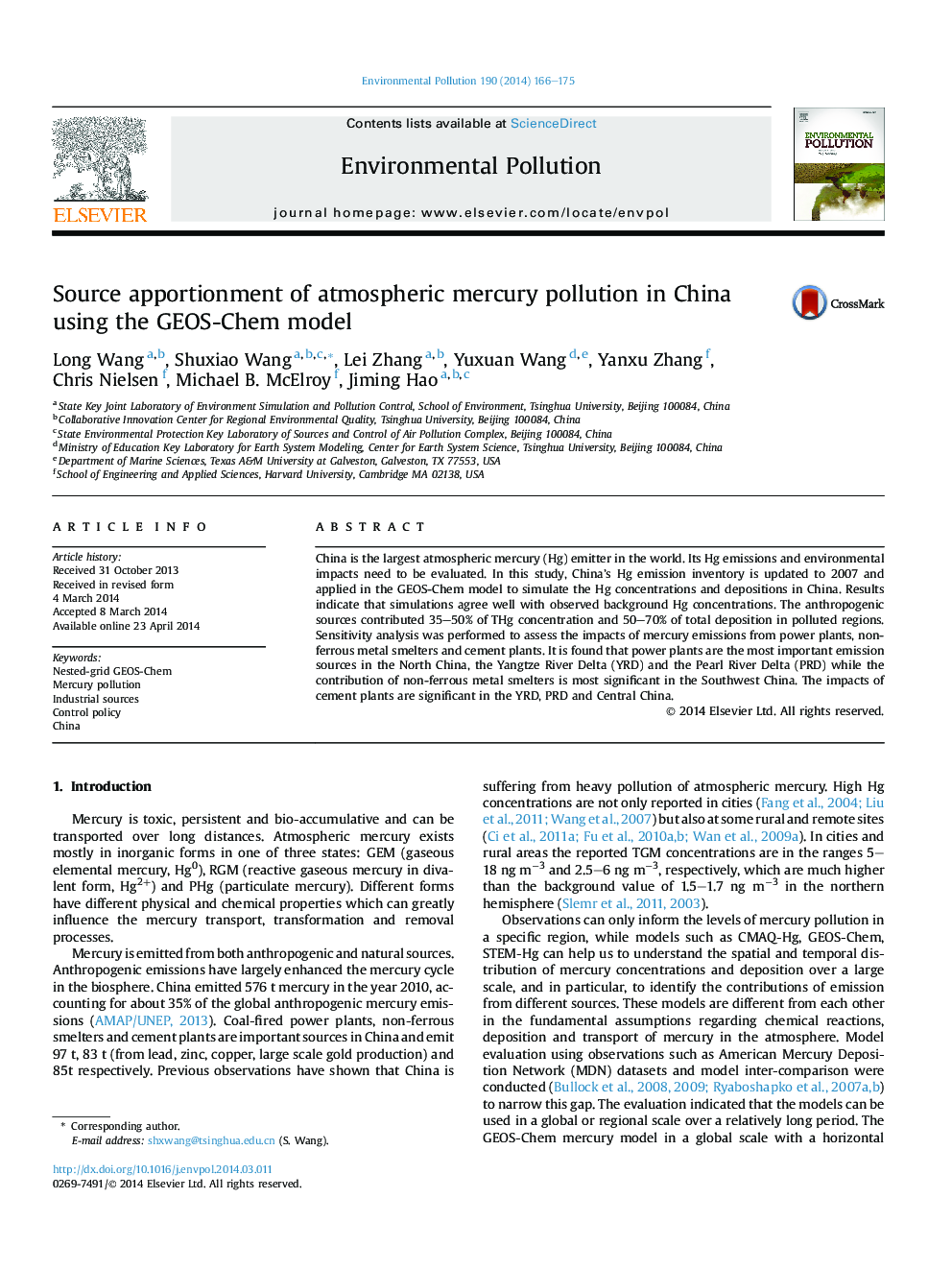| Article ID | Journal | Published Year | Pages | File Type |
|---|---|---|---|---|
| 4424326 | Environmental Pollution | 2014 | 10 Pages |
•China's anthropogenic mercury emission was 643.1 t in 2007.•GEOS-Chem model well reproduces the background Hg concentrations.•Anthropogenic emissions contribute 35–50% of Hg concentrations in polluted regions.•The priorities for mercury control in polluted regions are identified.
China is the largest atmospheric mercury (Hg) emitter in the world. Its Hg emissions and environmental impacts need to be evaluated. In this study, China's Hg emission inventory is updated to 2007 and applied in the GEOS-Chem model to simulate the Hg concentrations and depositions in China. Results indicate that simulations agree well with observed background Hg concentrations. The anthropogenic sources contributed 35–50% of THg concentration and 50–70% of total deposition in polluted regions. Sensitivity analysis was performed to assess the impacts of mercury emissions from power plants, non-ferrous metal smelters and cement plants. It is found that power plants are the most important emission sources in the North China, the Yangtze River Delta (YRD) and the Pearl River Delta (PRD) while the contribution of non-ferrous metal smelters is most significant in the Southwest China. The impacts of cement plants are significant in the YRD, PRD and Central China.
